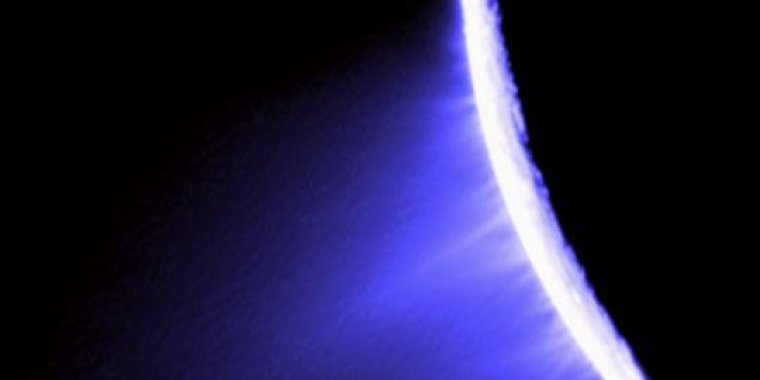| News / Science News |
Complex Organics Bubble up from Enceladus
Data from NASA's Cassini spacecraft reveal complex organic molecules originating from Saturn's icy moon Enceladus, strengthening the idea that this ocean world hosts conditions suitable for life. Research results show much larger, heavier molecules than ever before.

A dramatic plume sprays water ice and vapor from the south polar region of Saturn's moon Enceladus. Credit: NASA/JPL/Space Science Institute
Powerful hydrothermal vents mix up material from the moon's water-filled, porous core with water from the moon's massive subsurface ocean - and it is released into space, in the form of water vapor and ice grains.
A team led by Frank Postberg and Nozair Khawaja of the University of Heidelberg, Germany, continues to examine the makeup of the ejected ice and has recently identified fragments of large, complex organic molecules.
Previously, Cassini had detected small, relatively common organic molecules at Enceladus that were much smaller. Complex molecules comprising hundreds of atoms are rare beyond Earth.
The presence of the large complex molecules, along with liquid water and hydrothermal activity, bolsters the hypothesis that the ocean of Enceladus may be a habitable environment for life.
Such large molecules can be created by complex chemical processes, including those related to life, or they can come from primordial material in some meteorites.
At Enceladus, it's most likely they come from hydrothermal activity driving complex chemistry in the core of the moon.
The organic material is injected into the ocean by hydrothermal vents on the floor of Enceladus' ocean - something akin to the hydrothermal sites found at the bottom of the oceans on Earth, which are one of the possible environments that scientists investigate for the emergence of life on our own planet.
On Enceladus, bubbles of gas, rising through miles of ocean, could bring up organic material from depths, where they could form a thin film floating on the ocean surface and in cracks of vents, in the interior of the moon, beneath its icy shell.
After rising near the top of the ocean, the bubbles may burst or otherwise disperse the organics, where they were detected by Cassini. (NASA)
YOU MAY ALSO LIKE



